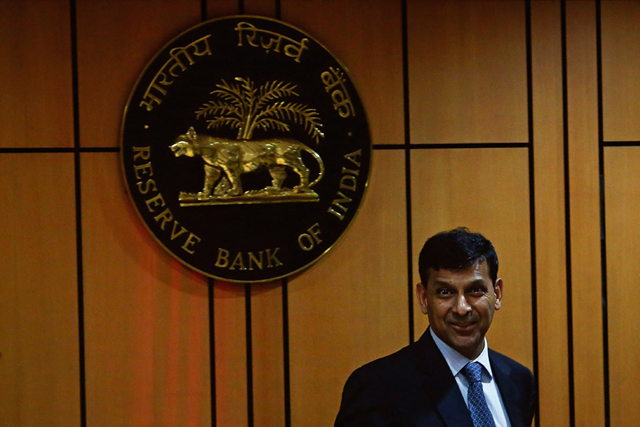At least, the government’s chief economic advisor, if not his boss in the finance ministry, seems to have some agreement with Raghuram Rajan on the expected course of interest rates in India, in tandem with a convincing decline in inflation in the economy.
The mid-year economic review of the government, largely a work of chief economic advisor, Arvind Subramainan and his team, expects interest rates in India to remain unchanged till the quarter ending March, 2015.
Also, the review abundantly praises Rajan for bringing back “the credibility” of monetary policy by containing inflationary threats and, thus, turning the real interest rates positive in the economy.
The agreement from the economic advisor regarding the timeframe to reverse the course of interest rates, is somewhat different from the stance of finance minister Arun Jaitley, who has been strongly pitching for a rate cut as early as in the December policy.
The government has been steadily stepping up pressure on the RBI governor to let go of the inflation fight and start cutting rates to breathe life into a slowing economy, as early as possible, citing an easing inflationary trend.
“If RBI, which is a highly professional organisation, in its wisdom decides to bring down the cost of capital [it] will give a good fillip to the Indian economy,” said Jaitley on 17 November, ahead of the December policy. But Rajan didn’t oblige saying it was too early to lower the guard before inflation dies down fully.
If the change in language in the economic review represents the overall thought-process in the finance ministry, it augurs well for Rajan and his team at the Reserve Bank, to finish the inflation battle on inflation “once and for all”. The government’s support to fight inflation is critical for the central bank.
Inflation has indeed eased in the recent months, backed by crash in international crude prices, a favourable base effect and decline in the prices of food and vegetable items.
But, going by the language on 2 December policy, Rajan would want to wait for the inflation numbers of December and January to ensure that the numbers indeed stick to the projected glide path.
Since January inflation numbers will be released in February, it will be only a few days for the union budget announcement.
It is quite logical that Rajan would wait until March-April to cut rates to take into account multiple factors such as behaviour of inflation when base effect vanishes after December, likely upward pressure on vegetable prices towards summer and the government’s fiscal situation and projections that will mirror in the budget. The RBI expects inflation to fall to 6 percent by March, which, at this stage, appears quite an achievable target.
Already the cost of borrowing in the financial system has already begun easing in the recent months as reflected in the short-term rates and government bond yields. Most banks have begun cutting their deposit rates in the recent past, as a precursor to lowering their lending rates.
Also, as Firstbiz has argued before regardless of when RBI will begin cutting the repo rate, lending rates will have to come down given the muted loan growth and much higher deposit growth of banks, resulting in higher carry cost of money for them.
It is quite logical that an economist like Subramanian would show more willingness to acknowledge this fact and give more time to the central bank governor to finish his inflation-battle to the end than the finance minister.
A rate cut in January-February appears unlikely. In this context, the government’s patience to wait until March-end would offer immense support to the central bank, whose boss, technically, is the finance minister and given the fact that the right to decide the desired inflation target, will anyway soon move to the government from the RBI under the new monetary policy framework.


)
)
)
)
)
)
)
)
)



